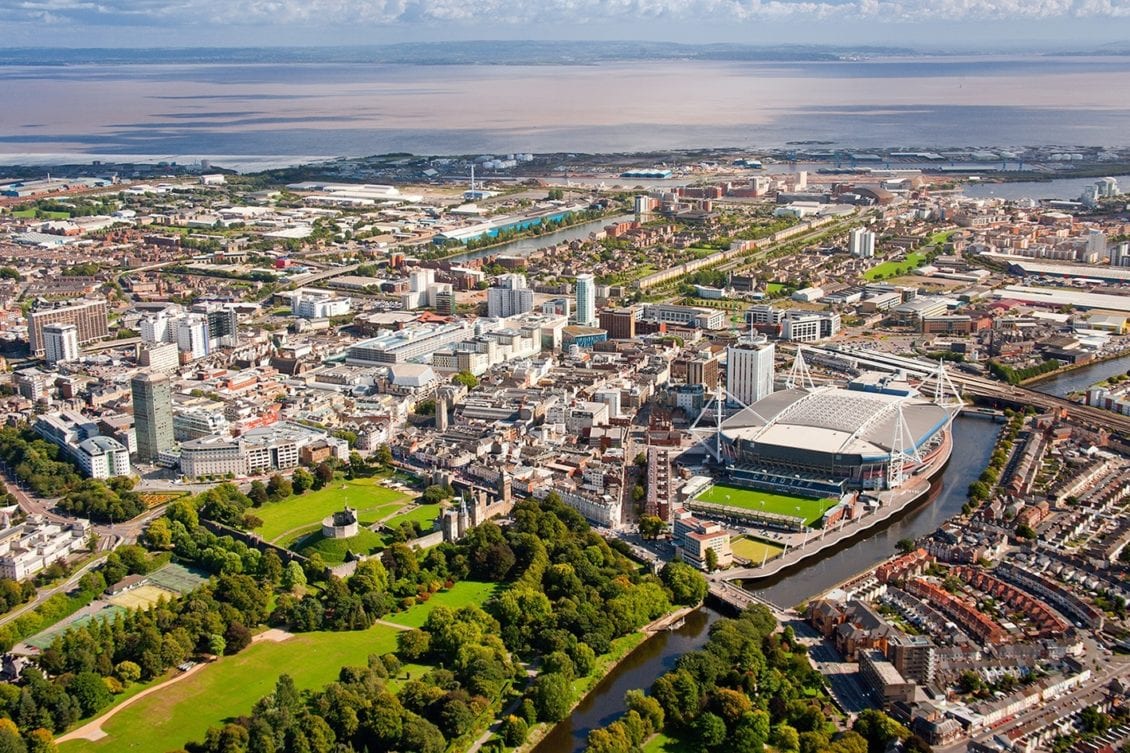Cardiff looks set to push ahead with plans to deliver one of the most-advanced, air-quality monitoring system in Wales.
A new two-year trial to install 50 air-quality monitors across the city, which measure pollution levels in real time, has been agreed by Cardiff Council’s Cabinet following its meeting to discuss air-quality data results for 2020.
The development of a real-time, air-quality monitoring network is a crucial step forward for the city. Public Health Wales has made it clear that poor air quality is the second biggest public health concern after smoking.
Cllr Michael Michael, Cabinet Member for Clean Streets, Environment and Recycling said: “By increasing the number of real-time monitors in the city, we will be able to get an even better picture of the situation across Cardiff and can then plan mitigations or interventions to address any issues that might arise. We would use a risk-based approach to determine where to site the monitors. This will help us collect the best possible data to use, and they are mobile so we can move them around the city to take readings when required or if information changes.
“We can then look at ways in which this real-time data could be published on the Council’s website so residents could check the air quality in Cardiff and make better informed choices about how they choose to move around the city. I don’t think any of us really wants to add to pollution, and if we can see that pollution is high, it might make us all think twice about taking the car to work when we could walk, cycle or get a bus or a train. Hopefully it will also help residents see that interventions like cycle lanes and bus corridors are cutting pollution improving the air we breathe and our health. The published Air Quality Index could use a traffic light system on the website, to ensure it is clear and easy to understand.”
The approved report also contains the air-quality data results for 2020, which shows that all the Air Quality Management Areas (AQMA’s) in the City Centre at, Ely Bridge, Stephenson Court (Newport Road), and Llandaff were well within legal limits. However, this data was collected during the pandemic when volumes of traffic across the city dropped by 28%, and even further to 38% in the city centre.
With the average annual concentration of NO2set at a legal limit of 40 µg/m3data captured in the AQMAs for 2020 showed the following:
- City Centre (Westgate Street) – 24.7 µg/m3
- Stephenson Court (Newport Road) – 28.4 µg/m3
- Ely Bridge – 30.4µg/m3
- Llandaff – 32.9 µg/m3
Cllr Michael added: “All four AQMA’s will remain in place, so we can continue to monitor air quality in these areas. Clearly traffic has returned pretty much to normal now, so we will be very keen to see the latest results when they are ready across these key areas.”
The council is required to deliver an Air Quality Action Plan on the measures it takes to address poor air quality in AQMA areas. Despite all of the AQMA’s being well within the legal limits in 2020 due to the pandemic, an action plan has been put place to ensure air quality in these areas remains within legal limits. The latest updates on these interventions which includes 2021 are:
- School Streets Project– 15 schools are covered by this scheme so far, where the road outside the school is closed to traffic during morning and afternoon pick up times to encourage children to walk, cycle, or scoot to school. Nine of these schools have had air-quality monitoring equipment installed.
- School Active Travel Plans– 113 schools currently have or are working towards having an active travel plan in place, with a commitment to have an active travel plan in place in all schools by April 2022.
- Implementation of the Clean Air Plan, including:
- 36 electric buses – one electric bus has recently been delivered, with the remaining 35 buses being delivered to Cardiff Bus in January 2022. These buses will be used in the city centre and routes that go through Air Quality Management Areas.
- 49 retrofitted buses – 20 Cardiff Buses have been retrofitted to Euro V1 emissions standards and 12 out of the 29 Stagecoach buses have been retrofitted to date. The Euro V1 emissions standard is the most advanced standard for petrol and diesel engines.
- Taxi mitigation measures – work is continuing to deliver an electric taxi lease scheme for taxi drivers to rent vehicles from the council. An incentive scheme is also being considered which could offer a fixed grant to contribute towards the purchase on an electric vehicle.
- City Centre Road Improvements-This involves repurposing road space to encourage public transport, cycling and walking and to discourage the use of private cars. Pop up cycleways are already in place/in construction on Wellington St, Castle Street, Boulevard De Nantes, Stuttgart Strasse, Dumfries Place, Newport Road and Tyndal Street.
Air quality in Cardiff is monitored through a variety of different monitors situated across the city. They monitor a variety of pollutants, including Particulate Matter (PM2.5); Nitrogen Dioxide (NO2) Sulphur Dioxide (SO2); Carbon Monoxide (CO) and Ozone (O3). Under the legislation, the council only has to monitor the levels of Nitrogen Dioxide (NO2) and Particulate Matter (PM2.5/PM10) in the atmosphere.









Leave a Reply
View Comments